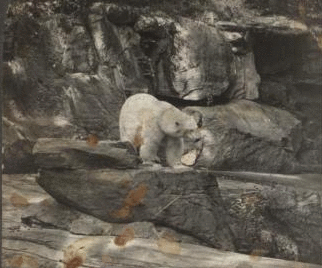I am sure most of the #ds106 folk will have seen this, but this is a great wee movie with lots of interesting uses of animated gifs. I’ve been a long time disparager of those animated gif clip art things on the web but recently converted to a fan by Jim Groom and ds106.
Month: March 2012
Not a Sound Effects Story #ds106
Tell a story using nothing but sound effects. There can be no verbal communication, only sound effects. Use at least five different sounds that you find online. The story can be no longer than 90 seconds.
When I was working out what to do with this one I seemed to have missed sound effects and no longer than 90 seconds.
This is an idealised walk combining sounds I’ve recorded over the last year or two when walking, some as audioboos.
Starting with traffic, there is bird song & rooks, footsteps through some wet ground, ducks, footsteps on a rocky path, a raven, a hill burn (small stream) finishing with the sound of one lark. It is mostly pretty quiet. it is also about 5 minutes long.
Five minutes of footsteps and tweets
This is as noted above a lot longer than the 90 seconds limit. While this particular example may not hold a listener for 5 minutes I do think that longer audio without speech has its place. Last year when I went to Field Recording at the Scottish Music Centre I noted:
what I'd take away was the quality of listening shown by the audience & presenters. The time taken. Timothy Cooper's Blast beach gave plenty of time to look at the images: audio can be slower. I am thinking again about Ian Rawes' “the ravenous eye and the patient ear”, Tim Nunn's theatre performances in the dark.
Assignment 6 – Mapping it out – #edtechcca6
Make a custom map using Google Maps.
Use Google Maps to create your own custom map that includes photographs of places.
I’ve been playing with google maps and the google maps api for a while so was please t osee some familiar territory for this Assignment.
This afternoon Dorothy, my wife, and I took a walk round Ardinning Loch, we do this nearly every week often twice a week in the summer, It is a short walk that is always interesting. Ardinning is a SWT reserve.
I used Trails on my phone to record a kml and gps track. The kml file was imported int oa new google map. I uploaded the photos it was then just a matter of dropping on some pins, filling in a title and pasting in the url to the image file.
View Ardinning in a larger map
Another approach
Over the last few year I’ve played with developing a workflow for creating maps like this using the GoogleMaps API. For this I use SuperCard, a mac scripting application. The project allows me to import a gpx file exported from Trails, get exif data for some pictures, iPhone photos have location data imbedded (It also lets me add locations to other pictures by comparing the time taken with the gps file). It then exports a gpx file which I upload to this website and a php file created a map.
Here is the Ardinning Walk map 120303 Ardinning and a whole set of Mapped Walks. In my opinion this has a few advantages over using google maps, you can embed audio & video, and the popup boxes link in sequence. It is also a faster to produce. Obviously it has the disadvantage of being a wee bit trickier to set up.
I’ve a fair number of blog posts going into this in a bit more detail: tagged googlemaps.
But what is it good for?
I think these sort of maps add another dimension to telling a story or presenting information. helping to tell a story in space as well as time. I can see this being incorporated into all sorts of class room projects, either for mapping learning experiences or creating fictional maps. This one The Kidnapped Trail – Google Maps is a great example of the possibilities.
A little bit of DS106
It loks like I can kill two birds here: Google Maps Story — MISSION: DS106
Stereogranimator

Create and share animated GIFs and 3D anaglyphs using more than 40,000 stereographs from The New York Public Library.
Since I’ve spent a fair bit of time animating gifs for DS106 of late this was interesting.
Stereoscopic photography recreates the illusion of depth by utilizing the binocularity of human vision. Because our two eyes are set apart, each eye sees the world from a slightly different angle. Our brains combine these two different eye-images into one, a phenomenon that enables us to “see,” ever so slightly, around the sides of objects, providing spatial depth and dimension. Stereoscopic views, or stereographs, consist of two nearly twin photographs — one for the left eye, one for the right. Viewing the side-by-side images though a special lens arrangement called a stereoscope helps our brains combine the two flat images and “see” the illusion of objects in spatial depth.
and
The Stereogranimator joins these latter-day adventures of the venerable GIF, mashing up an important early genre of internet folk art with a nearly forgotten species of folk photography.
You get to play with the creation of the gif, this creates a 2 frame animated gif and alternates between them.
Bonus link:Create 3D anaglyph images with 3 lines of Ruby code « saush
Update Colin maxwell tweeted Start 3D photos: 3D photo sharing and printing made easy